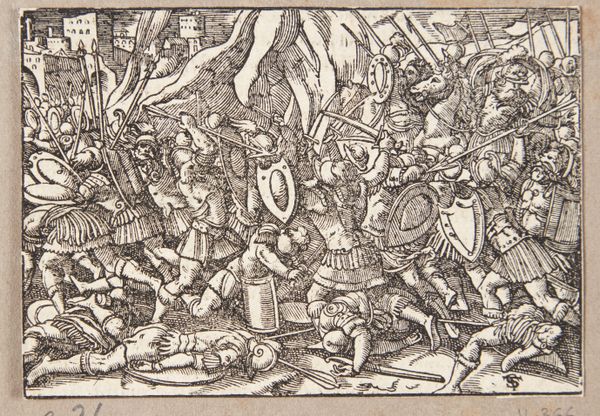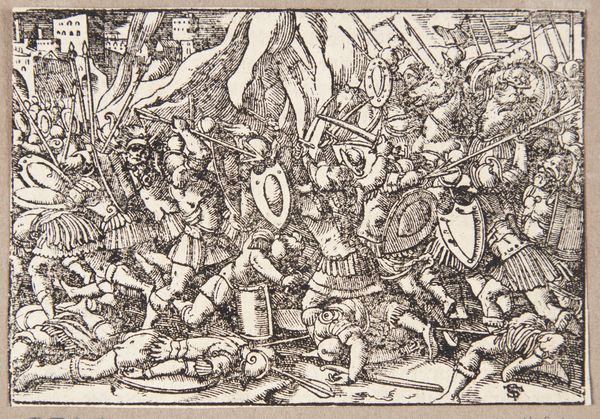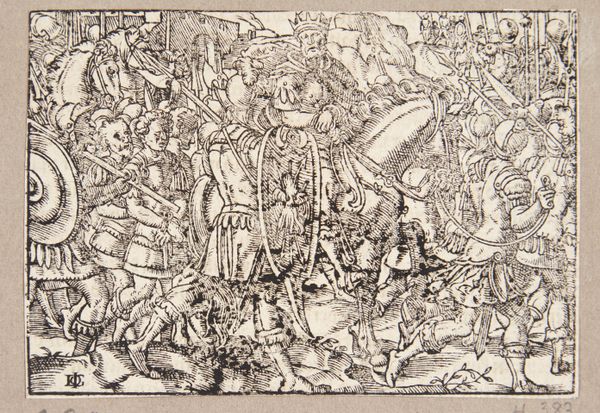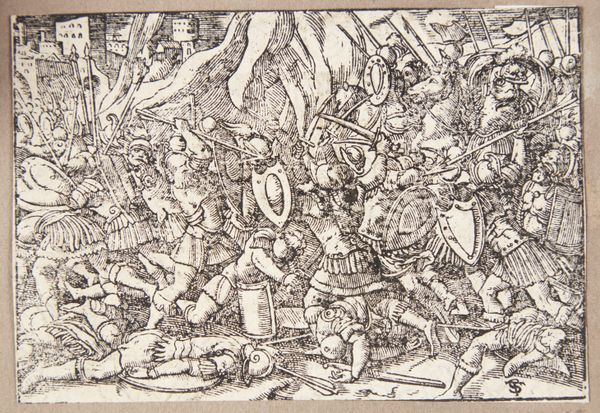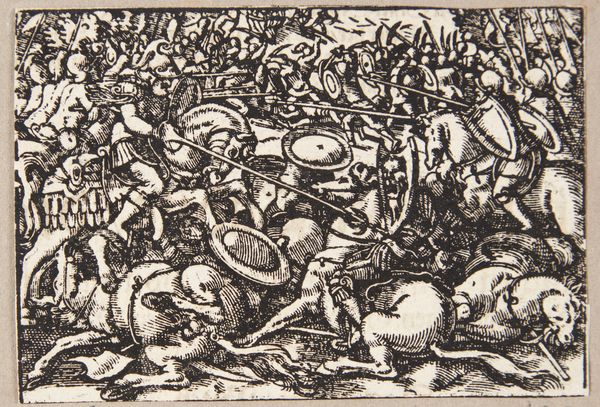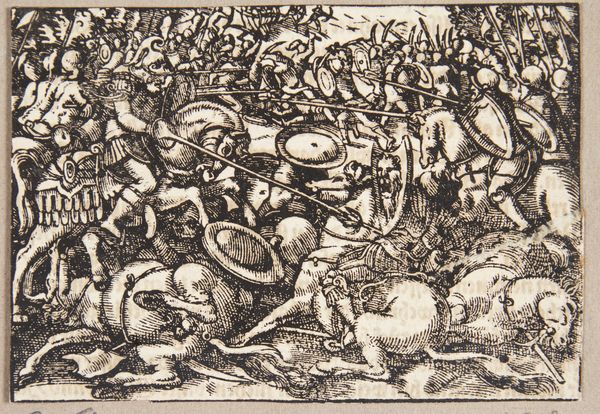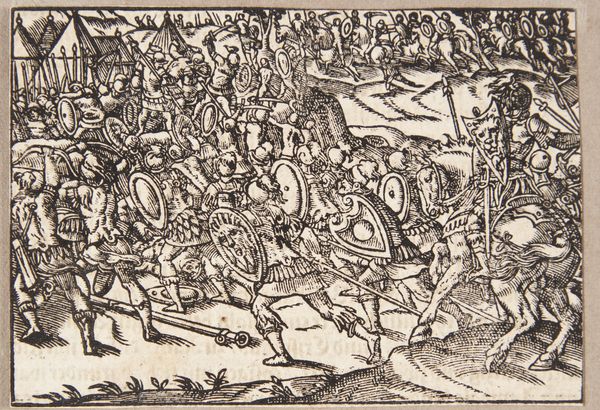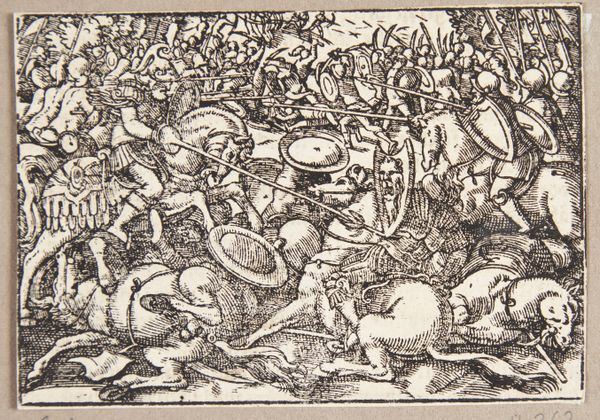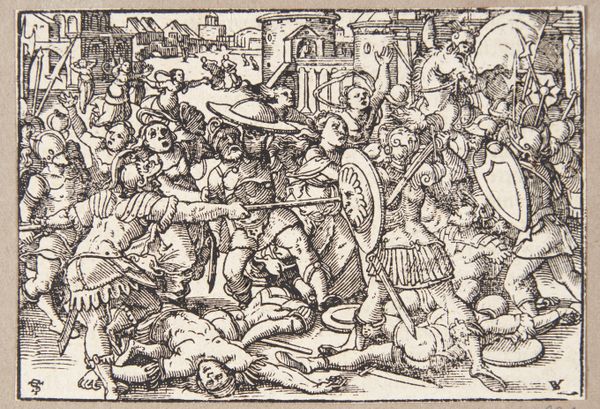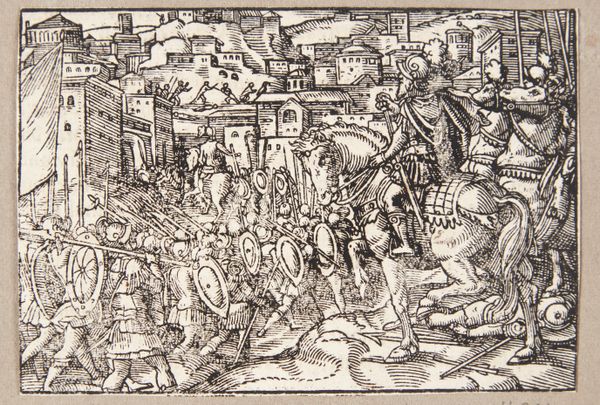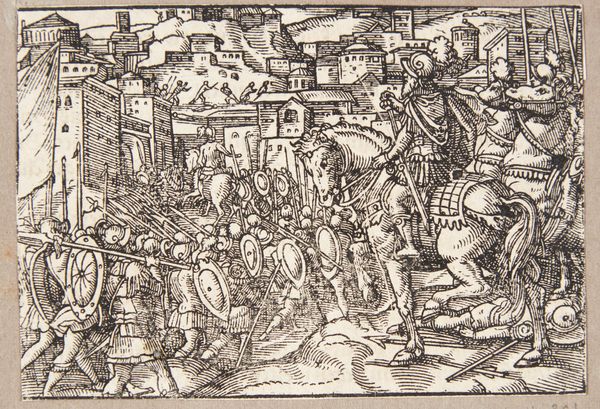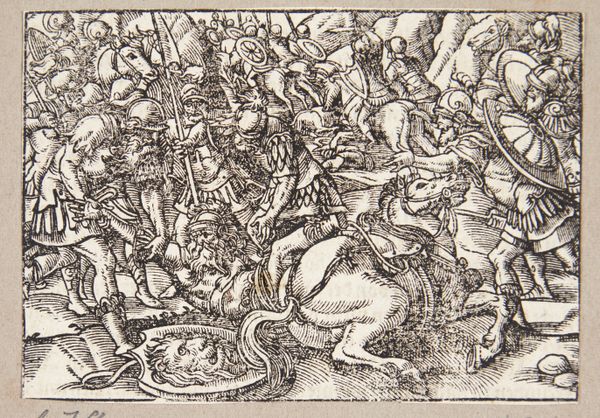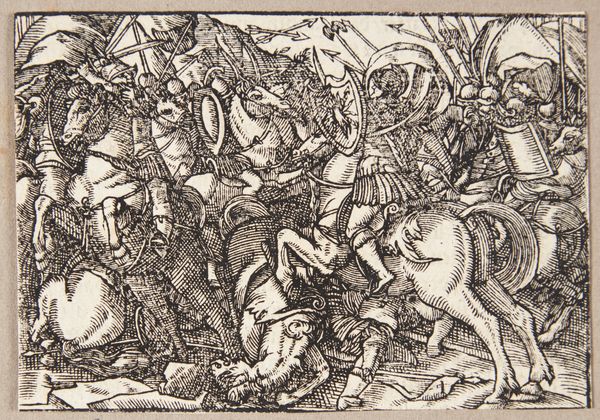
woodcut, engraving
#
medieval
#
woodcut
#
pen work
#
history-painting
#
engraving
Dimensions: 75 mm (height) x 105 mm (width) (bladmaal)
Editor: Here we have Tobias Stimmer's "Kamp mellem romerne og samnitterne," a woodcut from 1574. It's a dense, chaotic scene, a flurry of limbs and weapons. The dark lines and the subject matter create a very violent feeling. What symbols or imagery stand out to you? Curator: The entanglement of bodies immediately evokes the grotesque and the sublime, doesn’t it? Consider the shields—their very shape, oval or rectangular, echoes the body, suggesting a psychological identification with defense. And the weapons...more than instruments of war, they’re potent symbols of phallic power, wouldn't you agree? Think of the clash as not just historical, but a ritualistic dance of aggression and dominance. What historical memories might Stimmer be conjuring with such a combative depiction? Editor: I see your point. Perhaps Stimmer is also highlighting the tension and struggle present in human history more broadly? Are there any visual cues to differentiate between the Romans and the Samnites? Curator: A fascinating question. Observe the figures' attire, their helmets and shields; they reference classical ideals, yes, but filtered through a northern European lens. These signifiers blend historical accuracy with contemporary artistic convention, blurring the lines. Who is "Roman" and who is "Samnite" becomes less important than the overall theme: a display of human conflict, and its enduring presence in the collective imagination. Notice, how even the city is dominated by what appear to be giants—the historical memory almost overshadows it? Editor: It is starting to appear that it really isn't about who is who in this fight, but the bigger implications of a struggle itself. I hadn’t considered how much of the cultural context could be embedded in the visual details. Curator: Indeed! It reveals how artists of the era used historical themes to comment on broader human experiences, embedding psychological and cultural meaning within what might initially seem a simple depiction of a battle. A lens into cultural continuity across the centuries.
Comments
No comments
Be the first to comment and join the conversation on the ultimate creative platform.
